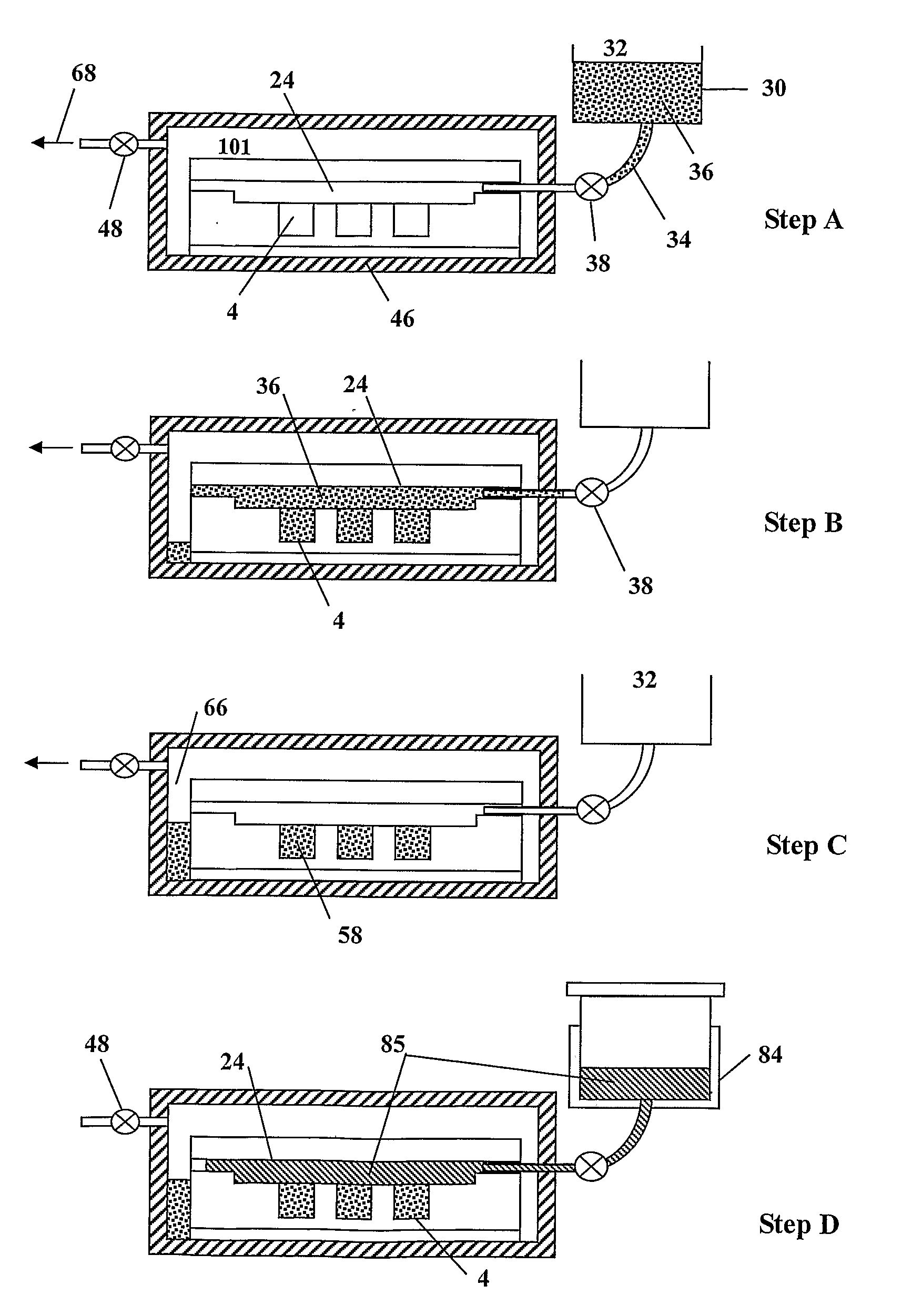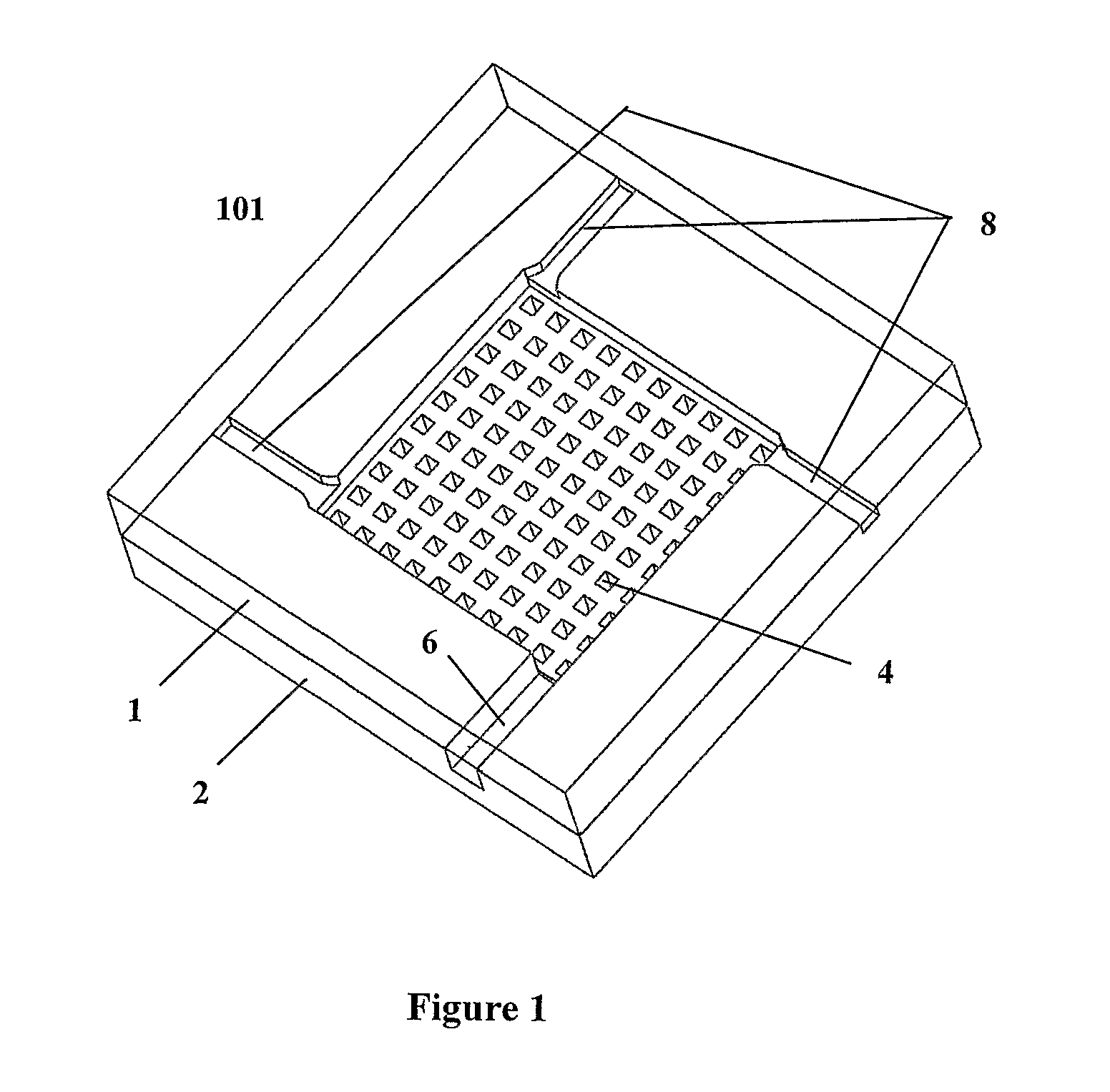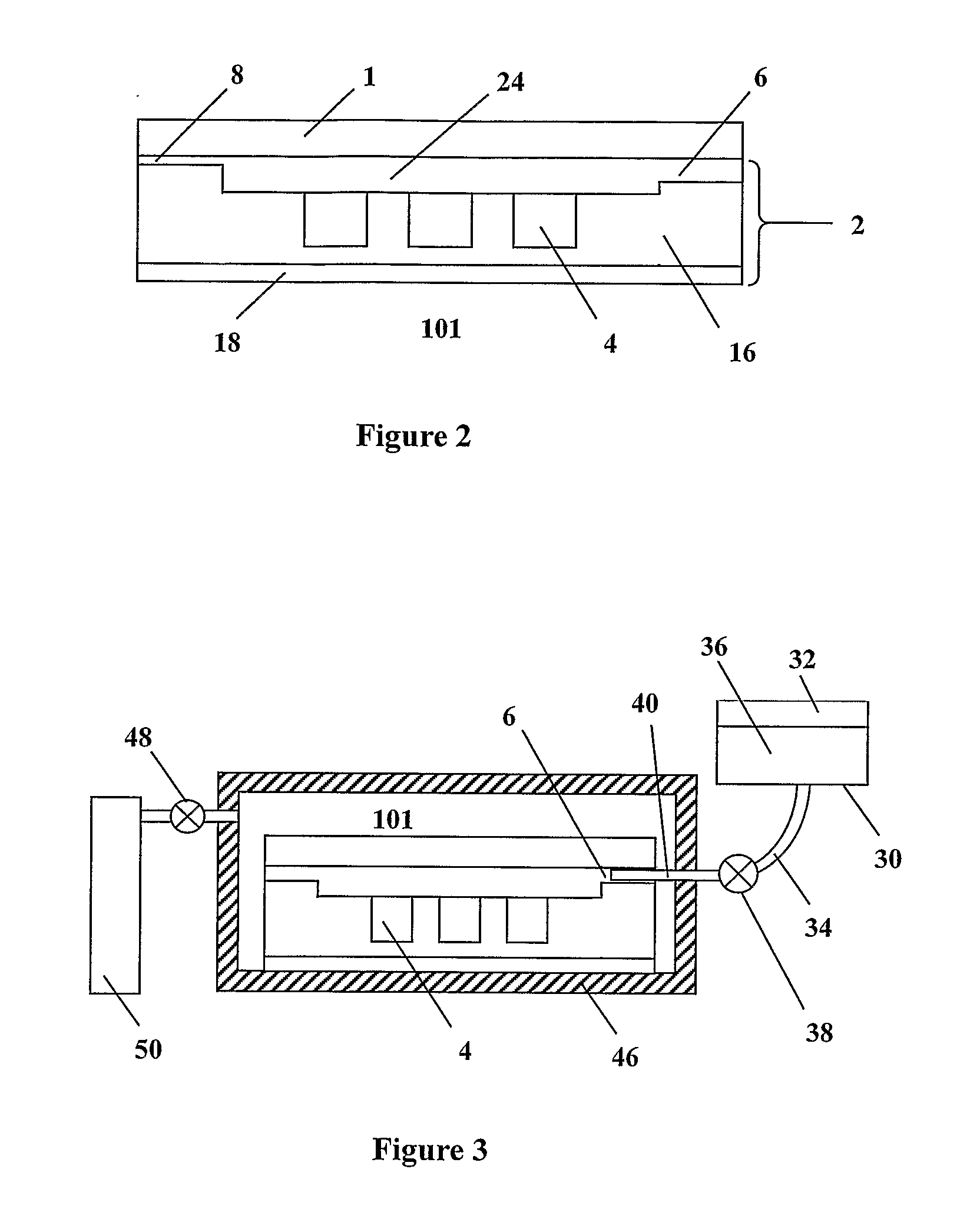Microfluidic device
a microfluidic device and microfluidic technology, applied in fluid controllers, laboratory glassware, thin material processing, etc., can solve the problems of low specificity, low sensitivity and specificity of microarray technology, and tedious manual loading of pcr sample into individual reaction wells of pcr chips, so as to prevent cross-contamination and sample evaporation
- Summary
- Abstract
- Description
- Claims
- Application Information
AI Technical Summary
Benefits of technology
Problems solved by technology
Method used
Image
Examples
example 1
Construction of a Device for PCR
[0056]An example of a device with the largest face measuring 5×5 cm, and possessing 100 wells each of dimensions 0.5×0.5×0.5 mm, was prepared as follows. Liquid prepolymer (2 mL) was prepared by mixing 10 parts PDMS Sylgard Silicone Elastomer 184 and 1 part Sylgard Curing Agent 184 (Dow Corning Corporation Midland, Mich., USA) to homogeneity with a magnetic stirrer at 150 rpm for 1 hour in a beaker. The PDMS prepolymer was applied to the surface of a metal die (micro EDM machined stainless steel) with reversed shape of the wells and channels, and the liquid prepolymer degassed under vacuum for 20 minutes. Subsequently, another metal block with a flat surface was placed on top of the PDMS prepolymer and the entire assembly was heated to 80° C. for 2 hours. The PDMS replica layer with nanowells and microchannels was carefully removed from the mould and the flat surface of the polymer subsequently bonded to a 0.1 mm thick acid-washed borosilicate glass s...
example 2
Cross-Contamination
[0058]It has been demonstrated that during the process of substantially filling the wells, there is negligible cross-contamination of chemical substances preloaded into the wells. In this respect a predetermined number of wells within a device comprising 100 equal volume wells were preloaded with a solution containing a blue dye. The solvent was subsequently evaporated from the wells of the device. Driven by a vacuum according to a method of the present invention, the wells and headspace were filled with a liquid which was a suitable solvent for the blue dye, before the headspace was appropriately evacuated. It was observed that essentially all of the blue dye remained in each of the wells into which it had been preloaded.
[0059]To further validate the finding of negligible cross-contamination, a select number of wells of another device were preloaded with a solution of purified 20 mer long oligonucleotides (primers) tagged with FAM fluorophore (5′-(6 FAM)-TCG TGC ...
example 3
Real-Time PCR Method
[0060]The devices, systems and methods of the present invention have been applied to the field of real-time PCR. Twenty-two wells of a device of the present invention comprising a total of 100 wells were preloaded with solutions containing primers pairs, leaving the remaining 78 wells empty. The solvent was subsequently evaporated leaving dried primer pairs. The sequences of forward and reverse primers were 5′-ATG AAT TAC CAA GTC AAT GGT TAC-3′ (24 mer) and 5′-CAT AAC CAG TCG GTA CAG CTA-3′ (21 mer). The wells of the device were filled with PCR mixture containing a fixed concentration of DNA template using a method of the present invention. The PCR mixture contained 10 mM Tris-HCl (pH 8.4), 50 mM KC1, 0.1% Triton X-100, 0.2 mM each of dATP, dCTP, dTTP and dGTP, 3 mM MgCl2 0.2 U / μL of Taq DNA polymerase (Promega, Madison, USA), 1.5 μg / μL BSA, 2×SYBR Green I (Cambrex Biosciences, Maine, USA) and 0.01 ng / μL of the BNI-1 fragment (189 bp) of SARS DNA cloned in pGEM-3...
PUM
 Login to View More
Login to View More Abstract
Description
Claims
Application Information
 Login to View More
Login to View More - R&D
- Intellectual Property
- Life Sciences
- Materials
- Tech Scout
- Unparalleled Data Quality
- Higher Quality Content
- 60% Fewer Hallucinations
Browse by: Latest US Patents, China's latest patents, Technical Efficacy Thesaurus, Application Domain, Technology Topic, Popular Technical Reports.
© 2025 PatSnap. All rights reserved.Legal|Privacy policy|Modern Slavery Act Transparency Statement|Sitemap|About US| Contact US: help@patsnap.com



